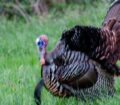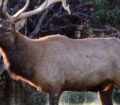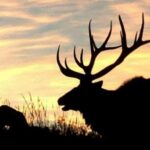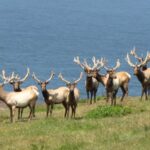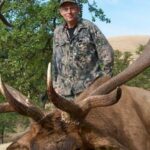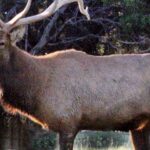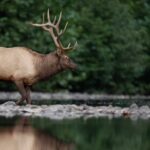Editor’s Note: In the turkey-hunting fraternity, one of the toughest turkeys to take in the Continental U.S. is the Osceolagobbler. Actually hunting the Osceola isn’t any different from hunting any other turkey; however, the area where he lives in Florida is very small. Although there’s some public hunting for the Osceola, it’s fairly well restricted. The same is true about the Roosevelt elk and even more so the Tule elk. California is the only state that has both the Roosevelt and the Tule, as well as the Rocky Mountain elk. JITW wanted to take a closer look at these far western elk, and what’s required to take them.
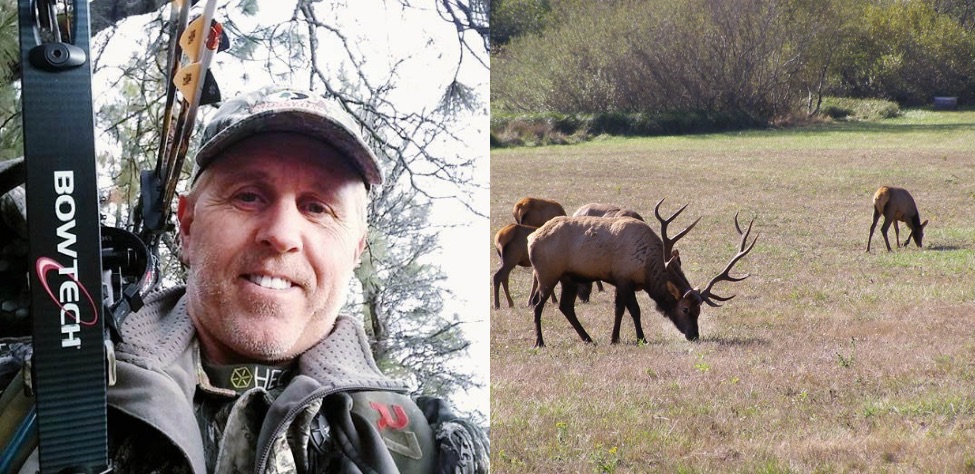
So, we talked to Parrey Cremeans, a hunting guide from northern California, who has been hunting and guiding in the far west since 1988. His guiding service is called Just For Hunting, which you can find online at, and his phone number is: 650-888-0808. He’s taken several elk and called in many more for his clients, besides guiding for black-tailed deer, mule deer, antelope, turkeys (Rio Grande and Merriam’s gobblers), bear, black bears and hogs. Or, to learn more about hunting elk specifically, you can find more information here. If you’re interested in hunting any one of these three elk subspecies, you need to book a hunt about two years in advance or even earlier than that. Here’s a map of California’s Elk Hunt Zones.
Understanding Why the Roosevelt Elk Is Tough to Take:
California is the only state that has all three subspecies of elk required for the North American 29. But the California species have a limited draw. You can’t buy an over-the-counter tag to hunt any elk in California. However, the zone that has the largest number of tags available in California is the Roosevelt zone, although there’s only 35 tags that can be drawn to hunt the Roosevelt elk. The states of both Oregon and Washington have herds of Roosevelts. I hunt Roosevelts primarily in Oregon because the state has over-the-counter tags for archery elk on the western side of Oregon and over-the-counter tags for Oregon residents who want to hunt them as well.
I’m often asked, “What’s different about hunting Roosevelt elk?” I love to hunt the Roosevelt elk during the rut because I like the show they put on for hunters. Roosevelts tend to be much-more aggressive than Rocky Mountain elk or Tule elk. At the peak of the rut, if you can call very well, you can just about bet on seeing a Roosevelt coming to your call and wanting to fight.
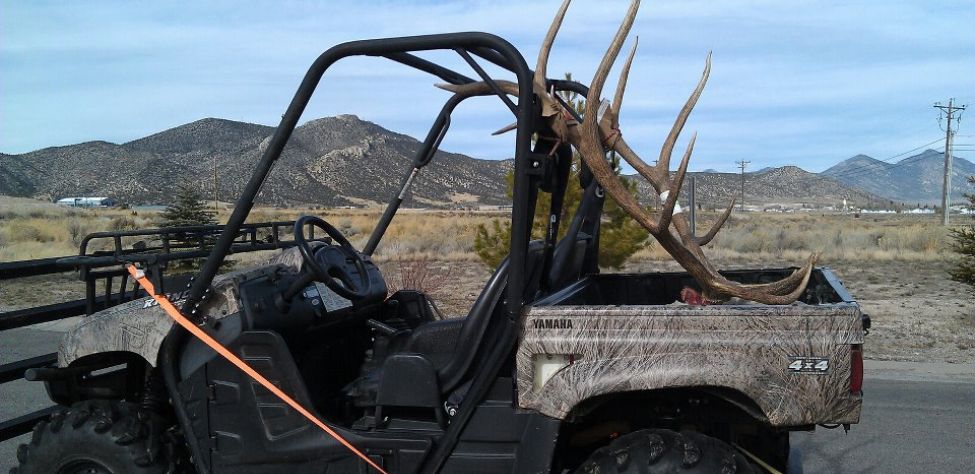
I believe the Roosevelt elk live in the roughest terrain of any of the elk species. The country they live in is pretty much straight up-and-down, and they like to get down in the deep timber in the drainages where they live. You can have an encounter with a Roosevelt elk where the bull comes within 10 yards of you, and you still may not be able to get a good bow shot.
The way I hunt them is to first of all find a bull that will respond to calling. Then I try to get myself or my hunter in the right place to take that bull when he comes in to us. Most of the time, we can get the elk to within 20 yards of the shooter. Because the country Roosevelts live in is so thick, you just about have to get the Roosevelt elk in that close for an archer to have a chance to take one.
The Roosevelt elk looks somewhat different from the Rocky Mountain elk – darker in color and with slightly-smaller antlers and larger bodies than the Rocky Mountain elk. A mature Roosevelt weighs between 1,000 to 1,100 pounds. However, you can use the same calls for a Roosevelt that you do to call in a Rocky Mountain elk or a Tule elk. I’ve found that all three of these elk species make just about the same vocalizations.
Looking for more content? Check out our YouTube channel and watch “Why I Hunt with Black Powder” by John E. Phillips.
Expert Guidebooks on Elk Hunting: Best Sellers

Secrets for Hunting Elk
The quickest, easiest (if there is an easy way), and safest way to find and take that bull elk of a lifetime will be to hunt with a guide.
Chad Schearer, a longtime Montana guide and TV personality, told me, “My hunter is my gun. If I get to the elk, and my hunter isn’t with me, then we don’t take the elk. My job is not only to find the elk but also to help the hunter get to the elk and make the experience as enjoyable as I can for him.” That’s the kind of fella with whom I want to go elk hunting.
An elk hunt can be tough, but it doesn’t have to be so tough that you don’t enjoy it. That’s why this elk hunting book starts with the confessions of an elk guide and with Chad Schearer’s philosophy of what the guide and the hunter’s relationship should be.
A good portion of your success will depend on your physical condition, and Matt Morrett of Harrisburg, Pennsylvania explains how an eastern hunter can get ready physically during June and July to hunt western elk, the animals he describes as, “Like deer or turkeys on steroids.”
Wayne Carlton, well-known elk hunter and TV and video personality from Montrose, Colorado, tells us what types of elk calls to use and what to say to the elk. Mike Miller of Colorado, another elk guide and Mossy Oak video personality, has tactics for the best equipment for bowhunting and gun hunting elk.
You’ll learn helpful strategies and hunting tips in this book, as well as some straightforward hunting methods that will help to make your elk hunt more successful.
“Thanks to the advice in your elk hunting books, I was able to call up a nice 6-point (6X6) bull elk! He was bugling like crazy. I called him in from about a ¼ mile away. Called him into bow range (about 40 yards away). It was a thrill!” ~Rob Brannon
VERSIONS: AUDIBLE & KINDLE

Elk: Keys to 25 Hunters’ Success
Often just one tip or tactic makes the difference in whether you take an elk home to dinner or have to hike back to the truck by yourself. In John E. Phillips’ latest elk book, Elk: Keys to 25 Hunters’ Success, you’ll learn from successful elk hunters the strategies they use to find and take elk.
Many know that the technique that seems to work most often is to hunt where other elk hunters don’t and understand where the elk are before you go on a hunt by studying data from each state, visiting HuntData (see chapter 1), examining maps, and reading postings on elk forums.
This book also tells you how to get ready physically for an elk hunt, including participating in Train to Hunt Competitions, what gear you need to take, how to enjoy a successful do-it-yourself elk hunt, or how to pick the best elk guide for you. You’ll also hear about the X System and the Broken Y System of hunting elk.
Although no one person has all the answers on how to help you find and take your elk, I’m convinced that this book’s outdoors men and women will teach you how to have satisfying elk hunts.
As my friend Karl Badger once told me, “Elk hunting doesn’t get any better than when I ride horses into the high backcountry, see two grizzly bears, hear a pack of wolves howl close to camp all night long, eat plenty of delicious food prepared on a fire and enjoy the company of good friends.”
VERSIONS: AUDIBLE, KINDLE & PRINT

How to Find Your Elk and Get Him in Close will teach you the tactics of 10 nationally known elk hunters, to help put that giant bull that’s been screaming at you from afar, in your lap. You’ll learn what some of the best guides, outfitters, and successful elk hunters do to find elk and get them in really close.
Also in this audiobook, you’ll notice that the majority of the experts call elk to within bow range. We selected numerous bowhunters and bowhunting guides, since the bowhunter has to get much closer to a bull than the gun hunter does – often less than 20 or 30 yards – practically in your lap.
On one elk hunt, I’d heard this bull bugle all morning. My guide had called him within 30 yards, and he was standing just inside black timber. I saw the smoke from his nose wafting out into the icy air less than 30-yards away. All the bull had to do was step out, and I could take the shot with my bow. But then, through no fault of my guide or me, the bull vanished.
The only conclusion I could come up with to understand why the bull I wanted to take with my bow hadn’t stepped out and given me a shot, was because he got raptured. He evidently had left the earth with no trace of himself.
This hunt was when I started wanting to learn more about hunting elk up close. In this book, I’ve tried to find some of the most knowledgeable, experienced, and practical elk hunters. I’ve always found that the best way to learn any outdoor skill, is to either hunt or fish with the best sportsmen in that field.
Often, in elk hunting, that means elk guides, who generally hunt every day of the season and receive a salary for every hunter they guide. So, I’ve put together a group of some of the best elk hunters I know to help us all learn how to find bull elk and get them in close.
VERSIONS: AUDIBLE, KINDLE & PRINT
Tomorrow: Learning about Tough Roosevelt Elk

